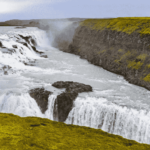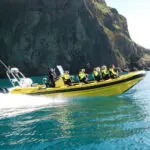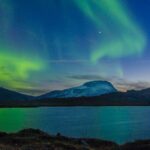It seems that every town and city has had its own great fire. The most famous ones are probably the Great Fire of London and the Burning of the Library in Alexandria. For Icelanders, the Copenhagen Fire of 1728 also strikes close to home. Not long before the fire, Iceland had been all but stripped of its ancient manuscripts, which were then sent to Copenhagen. Many of them burnt in the fire, and many other sank with a ship on its way to Denmark.
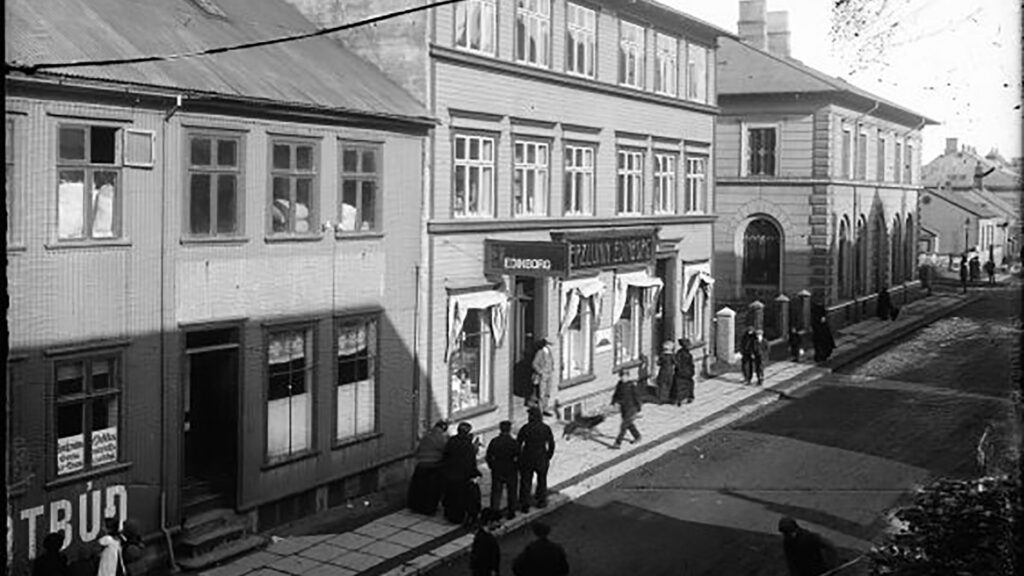
That’s not to say that all those manuscripts would still exist, as many of them were found being used as bedding, as food for fire. In some cases, the tale goes that the poorest people had begun to eat the skin manuscripts when the season was especially dire.
But I digress; great fires. On the morning of April 25, 1915, a fire broke out in one of Reykjavik’s largest hotels by Austurvöllur in downtown Reykjavik, called Hotel Reykjavik. The fire spread quickly, and it didn’t help that the fire brigade was relatively primitive, even for 1915. Fire hydrants broke, and the water pressure wasn’t good. However, it was lucky that the night was quite calm.
12 houses burnt down in the fire, and two died. The fire got so large that it was seen all the way to Keflavík.
How was Reykjavik at the time?
Just over 14.000 people lived in Reykjavik then (compared to 133.000 in 2021). There were between 3 and 9 police officers, and the fire brigade was primitive, even by the standards of 1915.
Iceland had gotten home rule some 11 years prior, the Reykjavik Water Supply opened in 1909, the Reykjavik Gas Company in 1910, and Reykjavik was getting its first proper harbor (opened in 1917). Just a couple of months after the fire, Icelandic women got the right to vote, and Icelanders got their first official flag.
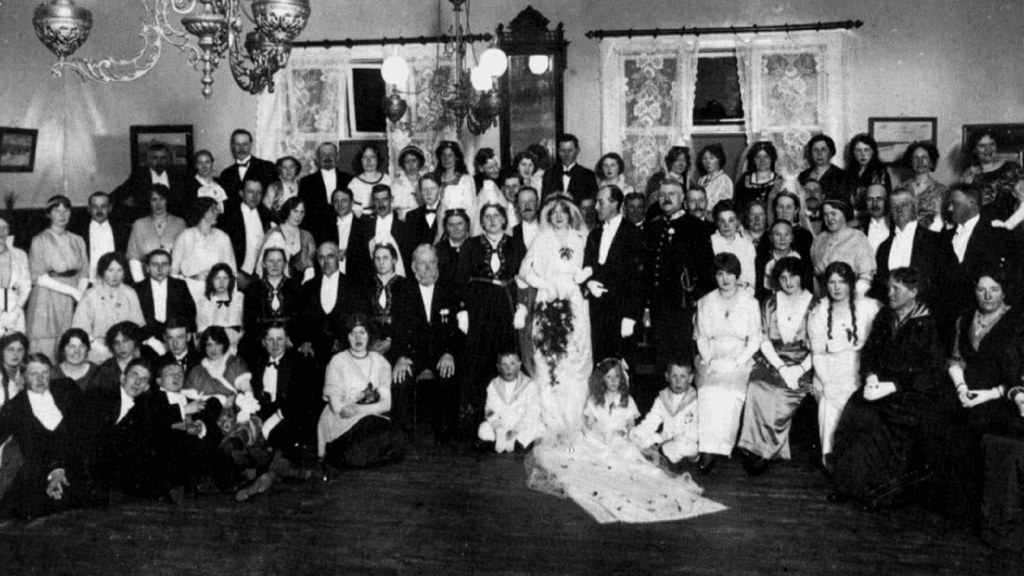
On the night of April 24, Jósefína Zoëga and English fishmonger Clifford Hobbs got married. Jósefína’s father, Helgi, paid for the wedding party, which was held in his sister’s hotel, Hotel Reykjavik. By all accounts, the party was a success, and most guests had left by 2 in the morning, and the newlyweds left half an hour later. Around three in the morning, Helgi Zoëga and his people were going and saying their goodbyes to his sister Margrét.
About 10 people were left in the hotel, guests and staff members.
The Fire Breaks Out
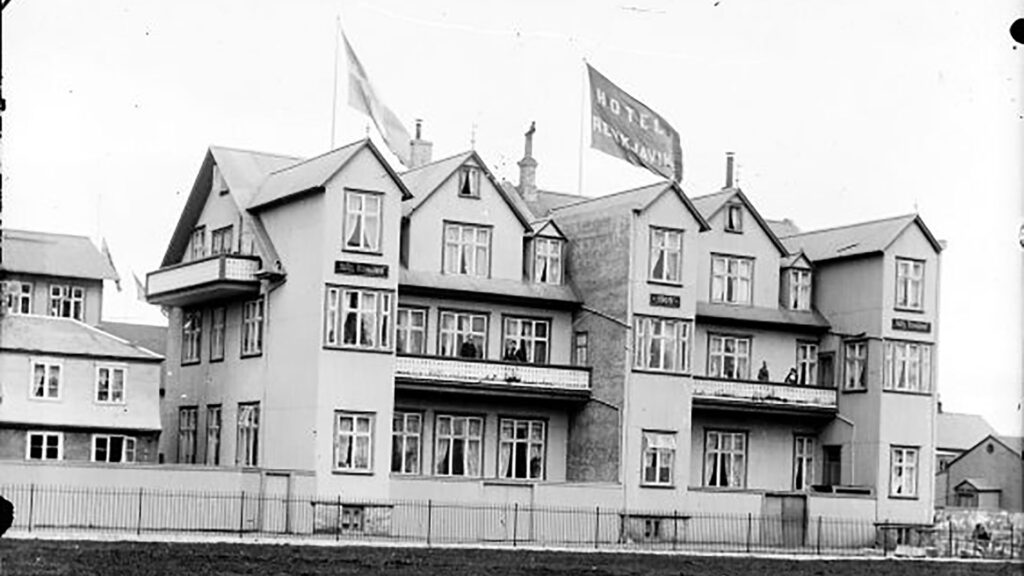
In a nearby house, on the corner of Hafnarstræti and Pósthússtræti (demolished 1970 to make way for an addition to the Landsbanki bank), Egger Briem, one of Reykjavik’s wealthiest farmers, lived with his wife. He, for example, owned Viðey Island at that time and had one of the biggest dairy farms in the country. He was there with a few friends, among them Hannes Hafstein, who later became Iceland’s first Prime Minister.
At 2:30 in the morning, Mr. Briem and his wife walked with their guests to Austurvöllur, where they said their goodbyes and went back home. Mr. Briem looked towards the hotel and saw a fire had broken out on the second floor. He ran towards the hotel and shouted, “Fire! Fire!”. Two men heard him yell, and they ran towards a so-called Fire Brigade Caller, which today is simply called Fire Alarm.
The Hotel Comes Ablaze
Eggert ran into the hotel where the party had been held and told them there was a fire, but few believed him. He ran to the second floor, and despite disbelief, the people followed him.
Margrét Zoëga opened the door to her room, where there was no fire. She next tried to open the door next to hers but couldn’t, which was no surprise since it was locked. The janitor unlocked it, and they opened the door.
The room was ablaze, mainly in the ceiling, but by their description, the fire had been pushed up by the smoke and gas. As expected, the fire grew when they opened the door and let in more oxygen. They tried to close the door but couldn’t.
Margrét decided to return to her room to get a few items, but the janitor stopped her, and everyone ran out. Not a moment too soon since they heard explosions from inside as soon as they went out, and the house was engulfed in flames.
The servants got out of the basement through a window. The janitor broke into the basement to turn off the gas used for lighting.
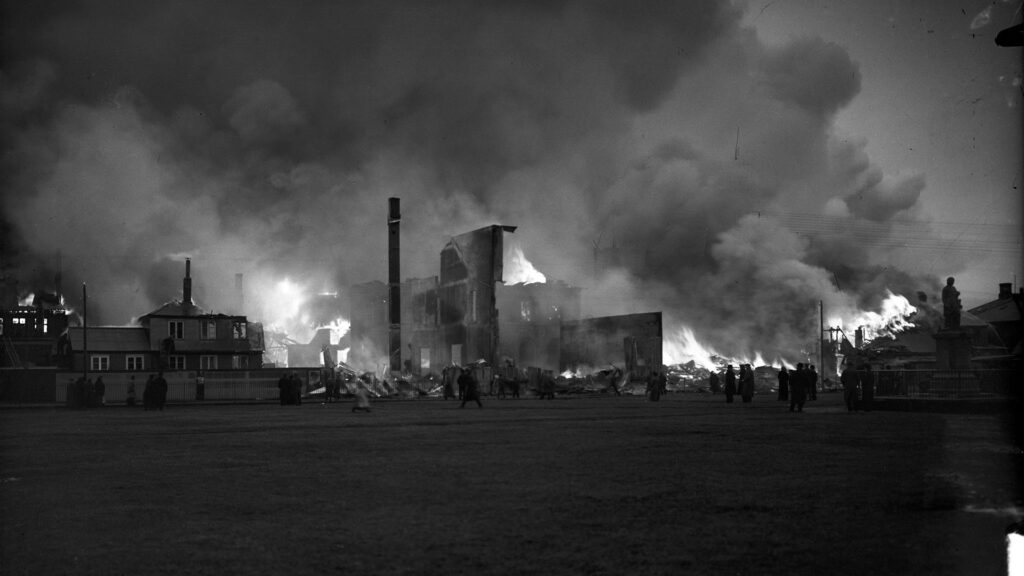
The Fire Brigade Slow to React
Eggert ran towards the Parliament and triggered the fire alarm; this was the second call the fire brigade got. From there, Eggert ran to the fire station, which at that time was in Tjarnargata, where Tjarnarbíó is now, close to City Hall. When he arrived, two firemen were already outside with a fire hose wagon and ready to go to Austurvöllur.
Eggert and another man took the wagon while the two firemen went inside again to wake up the fire marshal and the rest of the fire brigade with phone calls. The time was about 3:15, and the fire marshal was in Austurvöllur about 8 minutes later.
There were 36 men in the fire brigade in 1915, and they were all called out. Apart from this, all non-disabled men were required to help, and they were called out by so-called Fire Callers, who went around town with a hand-cranked siren to wake them up.
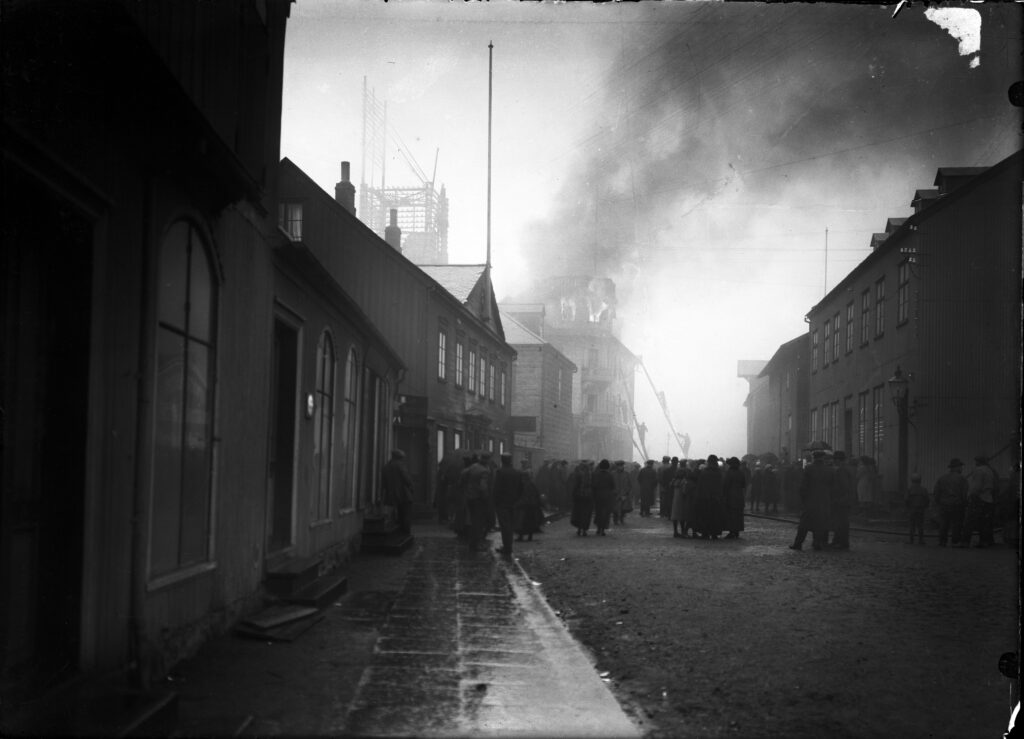
The Fire Brigade, as mentioned before, was primitive. They only had three hand-cranked fire pumps, three safety ladders, one ladder for trapped people, and eight fire hose wagons.
Three years prior, the town of Hafnarfjörður had bought a mechanical pump that could pump 480 liters per minute. The mayor of Reykjavik thought it was way too big for Reykjavik and didn’t buy one.
However, the pump was used for the fire, and many believe the fire would have been much more devastating without it.
Problem With the Water
Firefighters came from all directions and headed for the houses where the fire extinguishers were kept. They were then dragged to the city center and placed where they thought best.
Hoses were connected to the town’s hydrants. Still, several were utterly unusable because water had frozen in them and had burst.
Two hydrants that were supposed to be used leaked so much that they were unusable. The third one literally fell apart. Despite this, hoses were connected to 10-20 hydrants. The water pressure turned out to be wholly insufficient. And the hoses soon began to leak one after the other.
City officials closed off the water to the west side of Reykjavik and parts of the east side, but it didn’t fix the pressure.
The Fire Spread Quickly
Hotel Reykjavík was immediately engulfed in flames. There was no way to save the dead or the living from there. It soon became apparent that Margrét’s janitor had not made it out of the hotel again.
There was a light wind from the south-southwest and a cloudy sky. The fire soon spread to house no. 14 at Austurstræti, on the southwest corner of Pósthússtræti and Austurstræti. It burned down in no time, and little or nothing was saved from there. The fire spread to the house on the other side of Pósthússtræti, where Hótel Apótek is now, and it quickly burnt to the ground.
The firefighters couldn’t get to the fire on the Austurstræti side. The sea of fire covered the street, and the heat was unbearable.
The fire quickly spread to the houses north of Austurstræti. Landsbankinn bank on the corner and the next building to the west, which housed shops and a butcher. The house next to the hotel also burnt down.
The fire was finally stopped by Austurtsræti 8, where the Ísafold printing press was housed. There was a small alley between the houses and a firewall on the house. A large sail was draped over it, and it was kept wet. On the other side of the street, the fire was stopped at Austurstræti 7, where the Icewear store is now.
Houses in Hafnarstræti Were Next to Burn
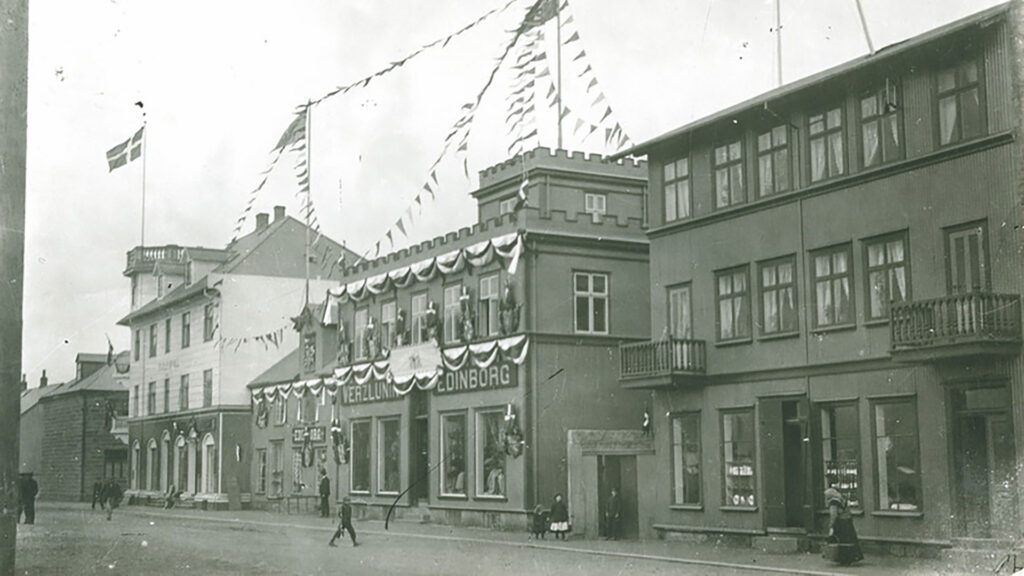
The fire spread over to Hafnarstræti. Three buildings burnt down, two called the Edinburgh Houses, after the store housed there.
Ingólfshvoll, a house that stood on the corner of Hafnarstræti and Pósthússtræti, was new at the time (but has been torn down now) and caught fire, but only its top floor and roof burnt. The Post Office also caught fire, but they managed to extinguish it before any significant damage was done.
By this time, all the effort went into stopping the spread as it was apparent they would not save the houses that had already caught fire.
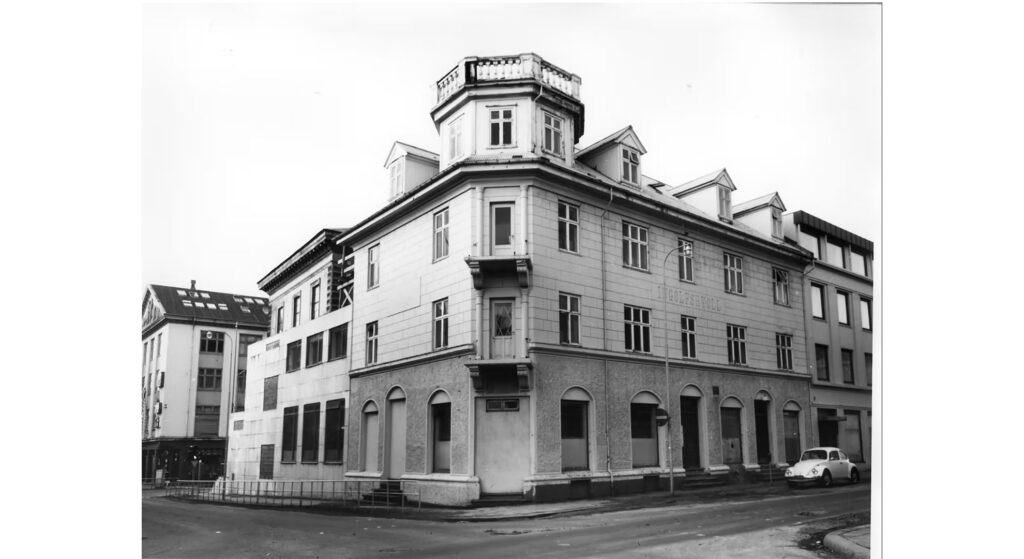
The second person to die in the fire was the owner of the corner house, Ingólfshvoll. He was watching the fire and believed it was paramount to get a fire hose to the roof of the building to stop the fire. The only way to do that was to go through the house. Men tried to stop him. But he asked if he couldn’t decide what he did in his own home and ran inside. He was later found suffocated by a window in the attic.
The Fire Died Out
Slowly but surely, they managed to extinguish the fire. But the ruins burnt for days afterward. The fire greatly affected the town, as this was the town’s central shopping district.
Thankfully, there weren’t many apartments in the buildings that burnt, only in Hotel Reykjavik and Ingólfshvoll. That was a relief to many because there was a housing crisis in the town at the time (a significant problem in Reykjavik for decades).
The Danish King sent a condolence message to the Icelandic ministers:
“I ask you to express my deepest sympathy for the serious accident that has befallen the town of Reykjavík. — Chr. R.”
How Did the Fire Start?
That is something people never fully figured out. The room the fire broke out had been closed all evening, and the key was left on the outside. A waitress, Valgerður Guðmundsdóttir, 26 years old, had kept her hat and coat in the room. All the witnesses agreed that no one else was there that evening.
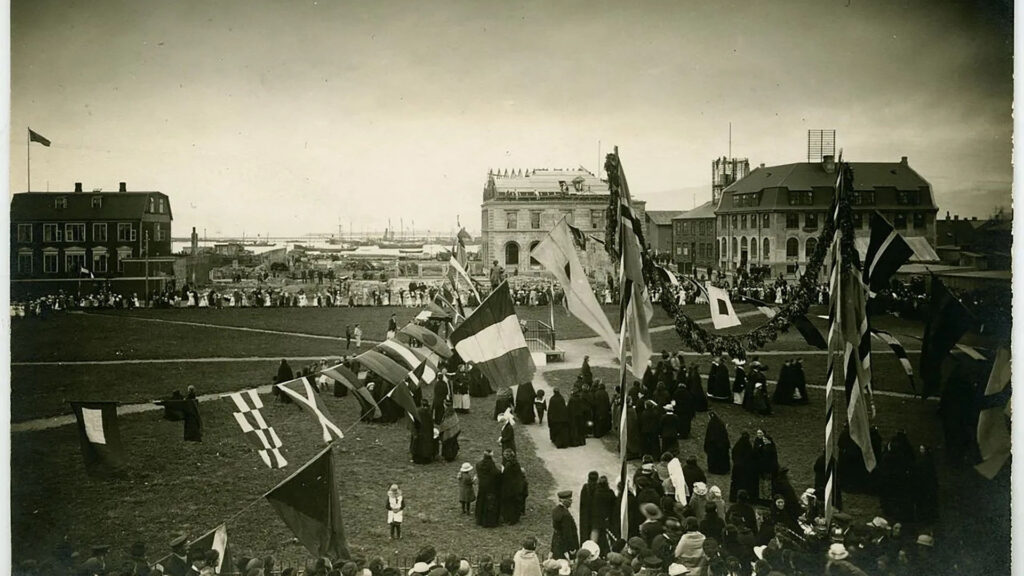
However, it just so happened that there was no light fixture in the room. The gas pipe stuck out of the middle of the ceiling. A gas light in the hallway outside was used to light the room. Valgerður says that around 3 that night, just before the fire was noticed, she went into the room and got her hat and coat. She hadn’t seen anything unusual. She had used the hallway light to illuminate her way to her coat and hat.
One hypothesis came from a man called Ólafur Theodór Guðmundsson. He was a carpenter and a fireman, had been the chief carpenter during the construction of the hotel and then the repairs inspector. So, he knew the house probably better than anyone.
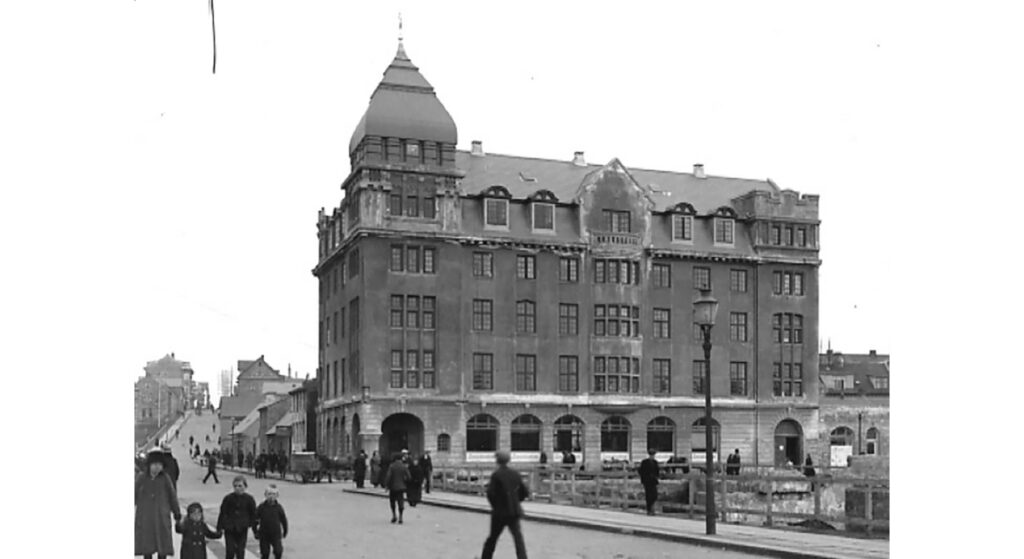
He knew the chimney had cracked the winter before during an earthquake. And as there had been a wedding party, the stove had been red hot in the kitchen most of the day. A fire could have gotten into the wood shavings between the ceilings and stayed there until it finally broke out.
What Happened Next?
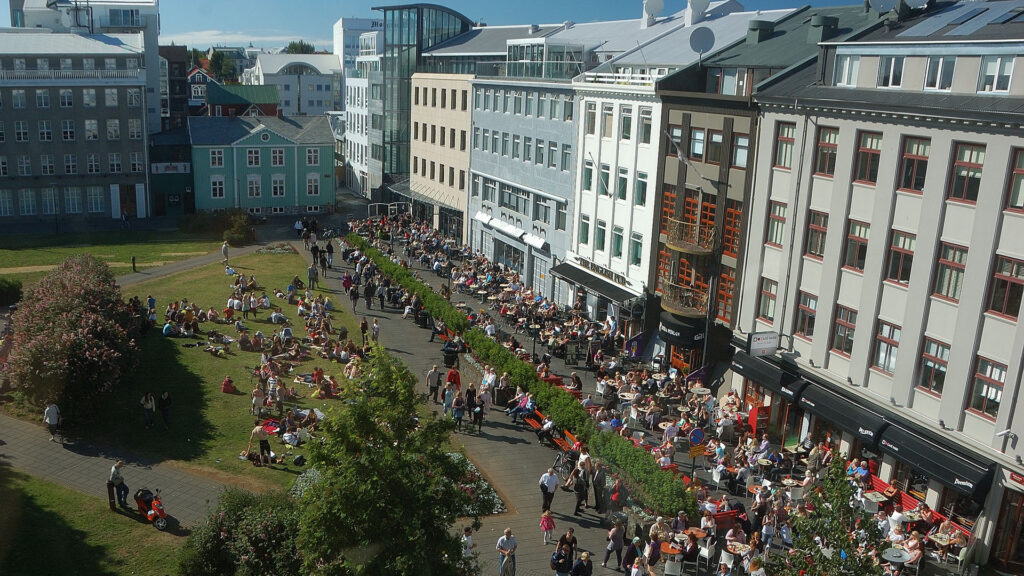
The town council got a rude awakening by the fire. Most houses in Reykjavik then were built from timber and clad in corrugated iron. So, one of the first things they did was to implement a new building regulation. It was confirmed a couple of months later.
“From now on, it will not be allowed to build houses in Reykjavík from other materials than stone, concrete, or other materials which are not more unreliable in the opinion of the building committee and the town council. Exceptions are made for houses built further than 3.15 meters away from the plot boundary and at least 2 meters away from the street’s edge. It is permitted to build houses clad with corrugated iron in such places, with a floor area no larger than 75 m2. They cannot be taller than two stories with apartments no higher than two floors above the basement.”
This began the so-called “Concrete Age” in Icelandic architectural history.
Please signup HERE for our newsletter for more fun facts and information about Iceland!



